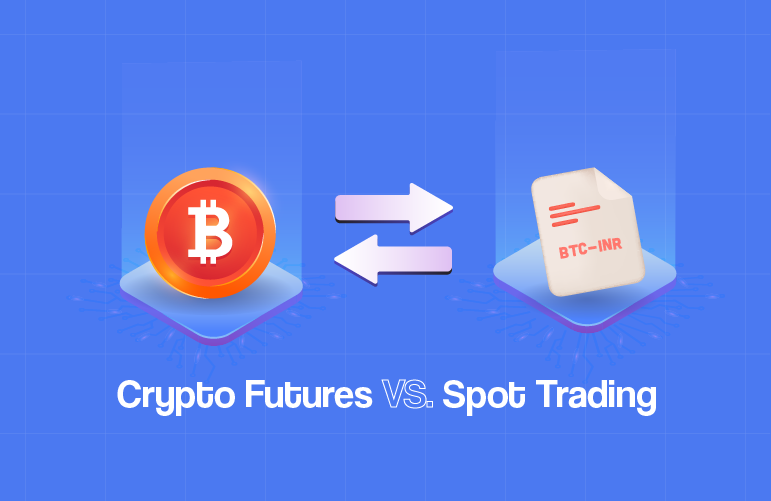The cryptocurrency market’s dynamic nature presents traders and investors with various avenues to explore. Two prominent strategies, futures trading and spot trading, offer distinct advantages and challenges. In this article we will define the key differences between these approaches, shedding light on essential considerations for understanding the crypto landscape effectively.
Cryptocurrency Futures vs. Spot Trading: A Comprehensive Analysis
Cryptocurrency trading has become synonymous with innovation and opportunity. Amid the multitude of strategies available, futures trading and spot trading stand out as primary avenues for market participants. Let’s delve into the intricacies of these approaches and uncover the essential distinctions shaping the crypto market landscape.
How does leverage work in Crypto Futures Trading?
One of the key advantages of futures trading is leverage. Unlike spot trading, where purchasing 1 BTC requires a significant upfront investment, futures contracts enable traders to open positions with only a fraction of the cost. Leverage allows traders to amplify their exposure, making it a capital-efficient strategy for maximizing resources. At Pi42, you can trade with up to 20x leverage, enhancing your potential returns while optimizing capital utilization.
Read More: Leverage Trading in Crypto: Maximize Gains & Manage Risks
Flexibility to Long or Short: Adapting to Market Trends
Spot trading profits exclusively from upward price movements, leaving traders vulnerable in bear markets. Futures contracts, however, offer the flexibility to capitalise on both bullish and bearish trends. Traders can employ sophisticated strategies such as short-selling, arbitrage, and pairs trading, expanding their toolkit to navigate diverse market conditions effectively.
Liquidity: The Bedrock of Market Stability
The futures market boasts deep liquidity, with trillions in monthly volume eclipsing the spot market. This liquidity not only facilitates swift and efficient transactions but also enhances market stability. The availability of counterparties at any given position reduces the risks associated with slippage, providing traders with a more secure trading environment.
Futures vs. Spot Prices: Understanding Price Dynamics
Spot prices in the cryptocurrency market are determined by the classic interplay of supply and demand. In contrast, futures prices incorporate the spot price and the cost of carry until delivery. Recognising the dynamics of the basis – the cost of carry – is crucial for traders navigating the complexities of the futures market.
Tax Efficiency
With Spot trading you are obligated to acquire the actual asset, but with futures, you are holding a contract that derives its value from an underlying asset, which means you trade without essentially holding the asset. Hereby, reducing the tax obligations as you have to pay taxes on your profit post conversion from USDT to INR.
Now, what makes Pi42.exchange unique here, is the Crypto-INR pair system. On any other platform, you have a Crypto-USDT pair, where, to withdraw your profits, you have to convert them to INR, thus making VDA applicable. With the one-of-a-kind Crypto-INR pair, you don’t have to go through the conversion process as you are directly trading with your INR. This means that any tax obligation on your profit is completely eliminated.
As the crypto market continues to evolve, understanding the nuances of futures and spot trading becomes paramount for traders and investors alike. Leverage, flexibility, liquidity, and price dynamics differentiate these strategies, providing distinct advantages for those who grasp their intricacies. Armed with this knowledge, market participants can make informed decisions, maximising their potential for success in the ever-evolving world of cryptocurrencies. Whether you are drawn to the capital efficiency of futures or the simplicity of spot trading, a comprehensive understanding of these strategies will undoubtedly enhance your ability to navigate the exciting and unpredictable crypto market.
